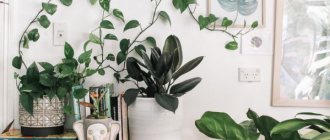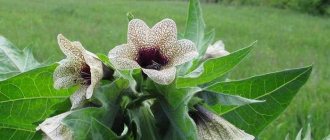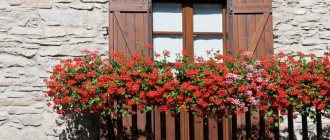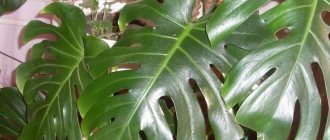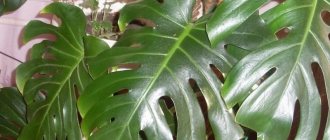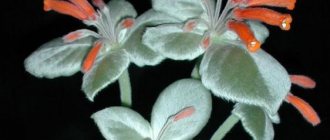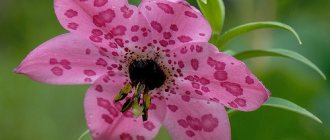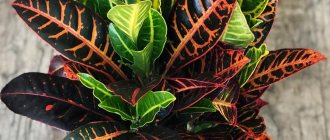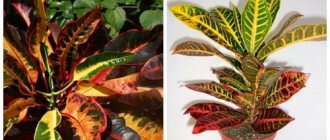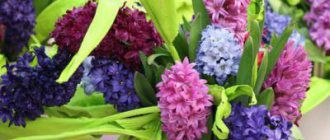Corokia cotoneaster
One of the most interesting house plants. It has tangled dense branches and at the same time an almost transparent crown. The height of the bush is from 30 to 80 cm, it can easily be given any shape.
The small, yellow, star-shaped flowers smell pleasant. Corokia loves bright light, cool temperatures, and moderate watering.
The zigzag growing branches create an unusual tangled lace appearance.
This exotic specimen prefers cool weather, especially during wintering. In summer it needs to be taken out into the fresh air more often.
trap leaves
Perhaps the most “highly specialized” are trapping leaves. They are present on carnivorous plants that feed on insects. A striking example is the sundew or Venus flytrap. The main task of such a leaf is to catch an insect, ensure its retention, and digest it with the help of special enzymes. The method of capture is different: in some cases the leaf produces sticky juice (sundew), in others it closes abruptly (Venus flytrap), in others special bubbles with valves come into action (pemphigus).
Pteris Cretan
An unusually beautiful species of fern, often grown at home. Despite its sophistication, it is unpretentious in care and is a godsend for beginning gardeners.
Pteris leaves are shaped like feathers. Their colors are very beautiful: a white vein in the middle and green edges. The plant loves diffused lighting; shade and bright sunlight are equally destructive to delicate foliage.
Pteris needs a stable, slightly cool temperature of +20…+22°C. The substrate in the pot is kept sufficiently moist, but water does not stagnate.
Hypoestes
A genus of tropical plants of the Acanthus family. It has amazing foliage color, resembling a face covered with rainbow freckles. Perfect for those who like brightness in the interior. This is a type of branched shrub with unusual leaf blades. The main feature of the plant is the presence on the surface of many dots of different shades: red, white, pink, purple. Well, just like freckles!
The bush is quite unpretentious, it is very easy to care for:
- grows both in small rooms (but with good lighting!) and in the garden with other moisture-loving ornamental plants;
- temperature - from 22 to 25°C, but not less than 17 degrees;
- watering should be plentiful;
- To make the foliage brighter and the shade more clearly visible, use fertilizer with a high potassium content.
Nephrolepis
One of the most popular types of ferns. Huge feathery leaves look impressive both in ampelous compositions and alone. Nephrolepis can be grown as an epiphyte. The pots need to be wide and low, since its root system is small.
The fern with curled, wavy, carved leaves looks original. The culture loves diffused sunlight, fresh air without drafts. In summer, the plant can be taken outside.
Growing nephrolepis is not difficult, but you need to remember that it needs high humidity. To achieve this, it is often sprayed, in hot weather even more than once a day.
Plant pests
- Mealybug. Signs of damage: young foliage and shoots of the plant. To combat the pest, the affected areas are treated by wiping with a soap solution, then sprayed with a 0.15% Actellik solution.
- Shield. Signs: the plant becomes covered with small brown plaques, which leads to the leaves drying out and completely falling off. They destroy scale insects in the same way as mealy mites.
- Spider mite. It entangles the foliage of the plant with a thin web, which leads to its lethargy and lifelessness. In this case, treating the leaves with soapy water and specialized store-bought products can help. Red spider mite infestations appear as many dark spots on the underside (hidden) side of the leaf blade.
- Thrips. Signs: the outer side of the leaves is densely covered with light dots, while the pests themselves are located on the inside. Spraying with a solution of a suitable insecticide helps get rid of insects.
Growing errors: Monstera leaf diseases
What are the signs of improper monstera care?
- Has the plant stopped producing new leaves for a long time? The existing support should be replaced with a higher and stronger one.
- Is the plant's young foliage small, pale, and unslitted? This means that the monstera suffers from a lack of light.
- Is the foliage turning brown and drying out? The plant suffers from low indoor humidity and high temperature.
- Drops of moisture appear on the leaves, then they wither? This happens due to excessive watering and excess humidity. If measures are not taken, the shoots will also wither and begin to rot.
What conclusions can be drawn? If you follow all the available recommendations and take proper care of your monstera at home, everything will be just fine.
Selaginella
A perennial ground cover plant from the genus Mocopod with very original leaves reminiscent of soft coniferous twigs. The shape of the leaves can be needle-shaped, round, spiral.
The colors are also varied: light green, yellowish, dark green and even almost black with a metallic sheen.
Lacy greenery grows very quickly, forming an intricate pattern. She needs diffused light and good moisture. Heat is destructive for club mosses - the plant withers, sheds its leaves and may even die.
Maranta
A tropical flower with an unusual color. The foliage itself is bright green, with clearly visible spots and veins of a red hue. The plant does not require special care. The main thing is to maintain optimal temperature conditions, water in a timely manner, trim dry leaves and replant 2 times a year with the arrival of spring.
An interesting feature of arrowroot is that the upper surface of the leaves is much brighter than the lower surface. This is more than noticeable when the bush lifts its leaves in the evening and folds them slightly.
Davallia
A lush epiphytic fern that seems weightless due to its beautiful filigree greenery. Its thick leaves are pinnately dissected, like those of garden fern species.
It grows very quickly, its roots literally crawl out of the container in which it is planted.
Davallia is unpretentious and loves sunlight. She needs infrequent but abundant watering. You can wash the flower in the shower, avoiding water getting on the soil and roots.
Classification by type of leaf blades
This classification is based on the number and division of leaves growing on one cutting or from one node of the stem (trunk). According to this, the simplest type is a simple leaf. It is characterized by the presence of only one leaf blade and one petiole. The leaf surface itself is called a plate, that is, its “canvas” with veins. In a simple leaf it can have any shape, but the cuts never reach the petiole. Leaves of the simple type always fall off along with the petiole, leaving not a single part of it on the tree.
The next type is a compound leaf. Here, several leaves are attached to one petiole at once. Moreover, each of them can have its own additional petiole.
Maidenhair
One of the most beautiful openwork indoor plants. Its graceful shoots add freshness to the room. Adiantum is demanding on lighting, watering and temperature. It needs to be sprayed daily with a spray bottle and ensure that the substrate in the pot is moist.
The plant does not tolerate heat and thrives in partial shade. The fern does not tolerate drafts and tobacco smoke. Adiantum is periodically pruned, removing old dried branches.
Tall non-blooming indoor indoor flowers with photos
The first one I would like to mention here is monstera .
Liana. With age, aerial roots appear on the monstera stem. With their help, the plant clings to the support. However, over time, these roots become longer and can become damaged. Therefore, they are usually rooted.
A young plant has a solid leaf plate, but as it grows, the leaves become large. In addition, cuts appear on them, extending to the center of the sheet. This makes him attractive for breeding.
The next, no less famous of indoor flowers is dracaena .
Dracaena is represented by many representatives of different appearance. The most popular ones that can be found on window sills are Dracaena reflexum, Canarian, Dereme, fragrant Sandera, Godsefa, and Marginata.
The flower has an interesting feature that is used when choosing a location. If the variety of dracaena you have chosen has dark-colored leaves, then the plant can easily tolerate shading. An ideal place for dracaena will be a place where there is no direct sunlight or where there is the possibility of shading. Varieties with variegated leaves will need additional lighting.
The temperature regime for the plant will be comfortable within 20-22 degrees in the summer, and in winter it will be 15 degrees. Doesn't like drafts. Although unpretentious, it loves abundant watering. But you can’t overwater it, otherwise it will die. In summer, watering is carried out when the top layer of soil dries, and in winter it is watered rarely - once a week.
Once every two or three years, as it grows, the dracaena is replanted. For replanting, take a pot slightly larger in size than the previous one. You can propagate the plant by cutting off the top and planting it in the ground. The remaining part will also produce young shoots. Yucca is propagated in a similar way.
Yucca . Belongs to the agave family and has about 40 varieties. It often resembles a palm tree, which causes confusion for beginners.
An adult plant looks like a tree. In some species the leaves come from the trunk, in others there is a rosette. The leaves are quite rigid and can reach a length of up to a meter; the leaf width is about 0.08 cm.
Lighting needs to be diffused. Therefore, the window sill will not work. However, yucca grows very tall and will not fit on a windowsill. The best place for a plant is in a room next to a window.
Yucca can tolerate drought, but should still be watered as the soil dries out. In general, summer watering is carried out once every five to six days, and in winter less often - once every ten days.
Ficus . Like the previous ones, popular among flower growers.
Ficus, a member of the mulberry family. Its “relatives” are fig and fig trees.
In nature, ficus can reach 30 meters and forms a huge spreading crown. The width of the sheet reaches one meter. Of course, you can’t put such a plant at home, but there are about 20 species that feel good in the apartment. The most popular are rubber ficus and ficus benjamina.
Quite unpretentious. As for lighting, it needs bright but diffused light. Ficus also loves warmth. In summer it needs a temperature of up to 30 degrees, but in winter 15-20 is enough. If the temperature is lower, the ficus may shed its leaves. Ficus also sheds its leaves when there is insufficient lighting. Therefore, in winter, when there is little light, it is illuminated with additional light.
The plant should not be overwatered or underwatered. Usually, the ficus is watered when the soil dries to a depth of 8 centimeters.
In order to grow better and look beautiful, it needs to be pruned. In this way, a crown can be formed.
Ficus is also interesting because it can be used to make a miniature tree - a bonsai.
Many people will probably like this option. It doesn’t take up much space and looks attractive.
Sansevieria . A rather interesting plant that can purify the air from various harmful impurities, such as benzene and trichlorethylene.
The second name that is commonly called is “pike tail”. The optimal temperature for the plant is considered to be between 15 and 25 degrees. Sansevieria does not tolerate too bright light; diffused lighting suits it. Watering is carried out as the soil dries. But it is necessary to water moderately, since excessive watering can lead to rotting of the roots. The pike tail does not need spraying. Replanted approximately once a year. Sansevieria is propagated by dividing the plant itself or by leaf.
Weddel coconut. Also called Weddel lithocarium. This is not quite a coconut in the sense in which we understand it. It originally belonged to coconuts, but according to another classification it is classified as a member of the genus Syagrus.
The plant is native to Brazil, where it grows up to two and a half meters. At home, lithocarium grows up to one and a half meters. The trunk reaches a width of 5 centimeters. 15-20 feathery leaves emerge from it on long petioles. The fruit is similar in size to a walnut and is edible. Its taste is reminiscent of coconut. Therefore, the species was classified as coconuts.
The plant is kept at a temperature of 18 to 20 degrees. Does not like direct sunlight or shade. Water the veddel coconut regularly and sparingly as the soil dries out. Does not tolerate overflow and stagnation of moisture. Propagated only by seeds and preferably in a small greenhouse.
Another interesting exotic plant is the bamboo palm or chamedorea.
Hamedorea can reach two meters in height. In nature, these plants grow up to five meters.
Hamedorea prefers shade; diffused light suits it. The flower forms a beautiful spreading crown. To maintain this shape, the chamedorea is periodically (every three months) rotated around its axis. The optimal temperature is from 20 to 24 degrees.
In summer, the plant is watered as the soil dries, and in winter it is watered once a week. The palm tree is sprayed constantly, from summer to autumn, using settled water at room temperature.
Once every two years in the spring, it is recommended to replant using a more spacious pot. The palm tree reproduces by dividing the root system, seeds and shoots.
